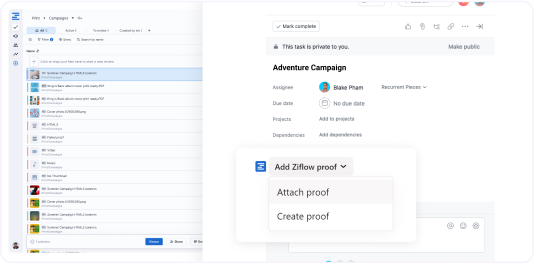
GET STARTED
TEAMS
INTEGRATIONS
INDUSTRIES
Integrate online proofing into Asana to centralize feedback on creative assets, streamline routing for fast, secure approval, and automate workflows to save time.
![]()
An easy, accessible review experience helps drive fast approvals for every element in your cross-channel campaigns, and powerful automation ensures that every stakeholder stays on the same page.
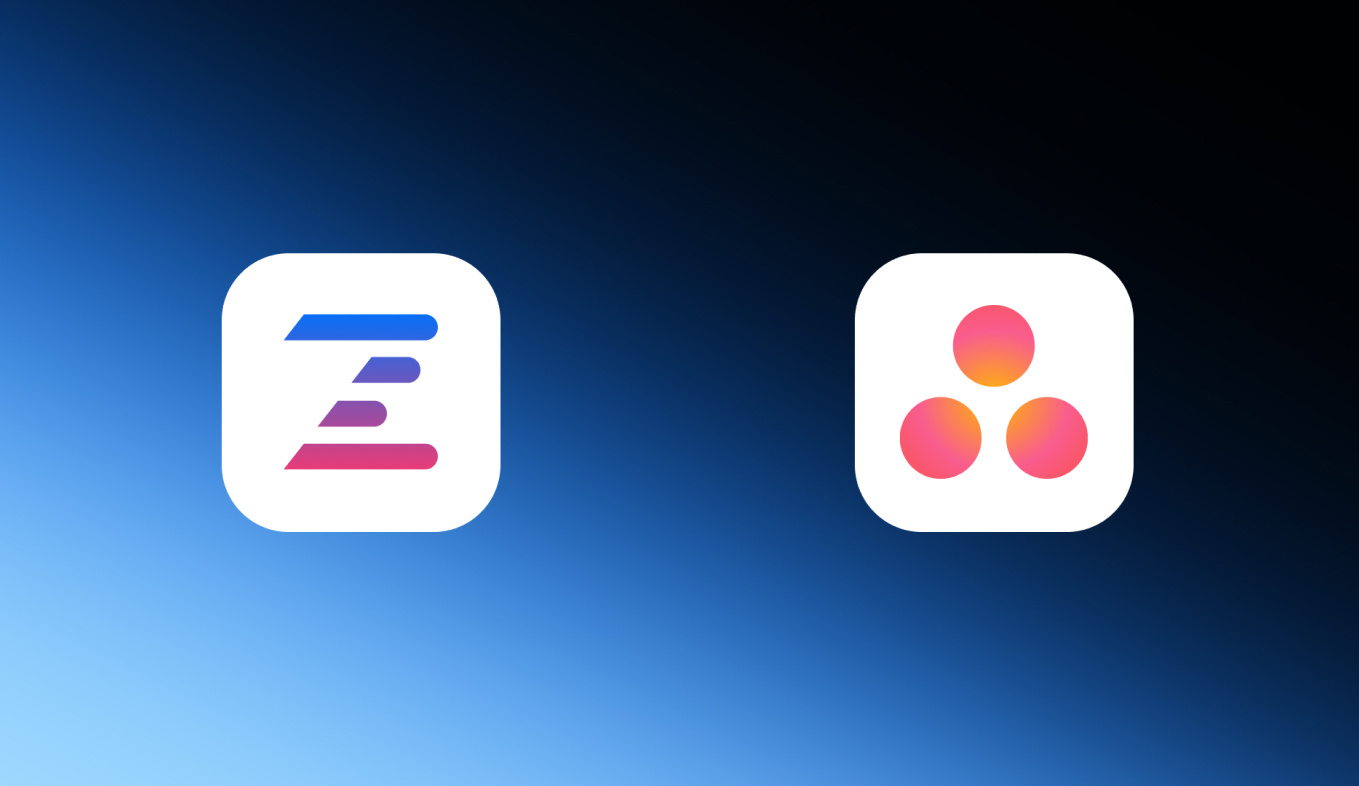
Unlock Ziflow’s full potential to seamlessly integrate with the project management apps your teams rely on.

Sync proofs from Ziflow with tasks in Asana (or vice-versa) to automatically track an asset’s development status as it flows toward approval.
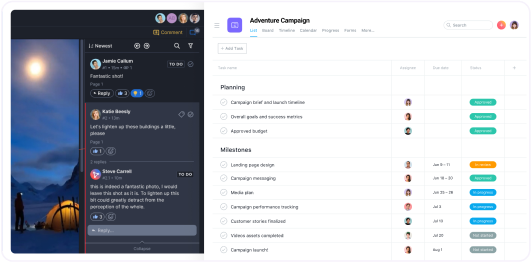
Ziflow’s easy-to-use proof viewer opens a new browser window to simplify proof reviewing without leaving the Asana platform.

Ziflow’s integration with Asana does the heavy lifting, automatically updating statuses and relevant project fields, saving your team valuable time.
Browse our how-to videos to explore the full potential of Ziflow’s integration with Asana.
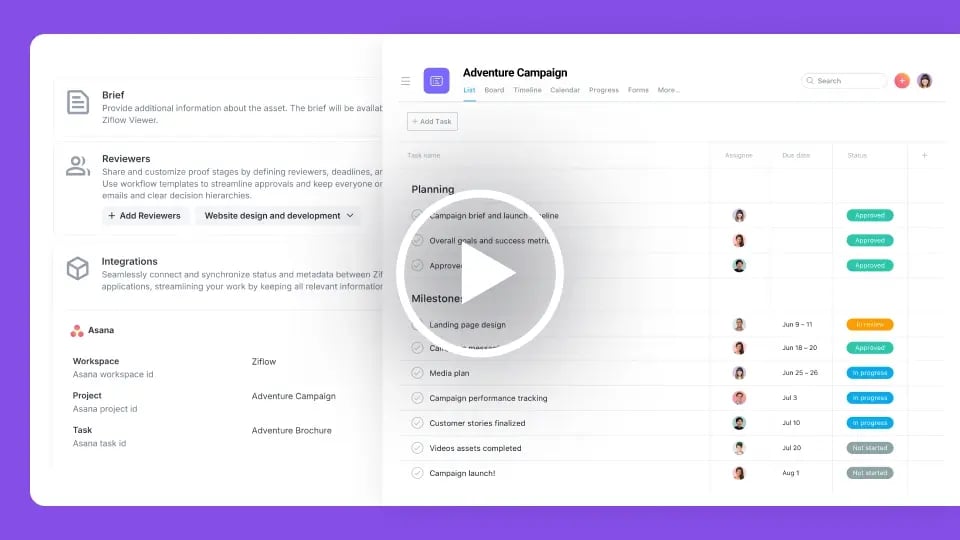
Watch how few clicks it takes to upload a creative asset in Ziflow and connect it to an item in Asana.
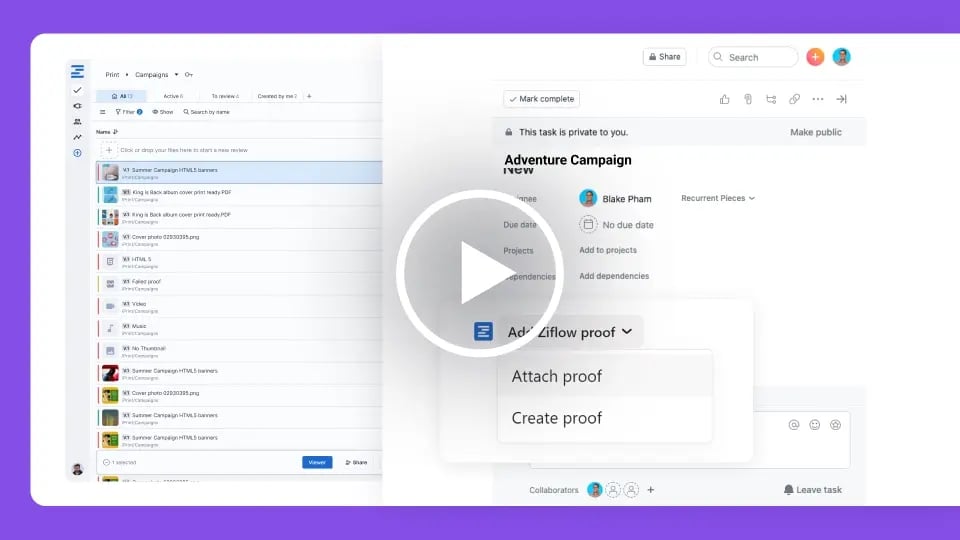
See how easy it is to drag-and-drop a creative asset into Asana to automatically create a proof in Ziflow.
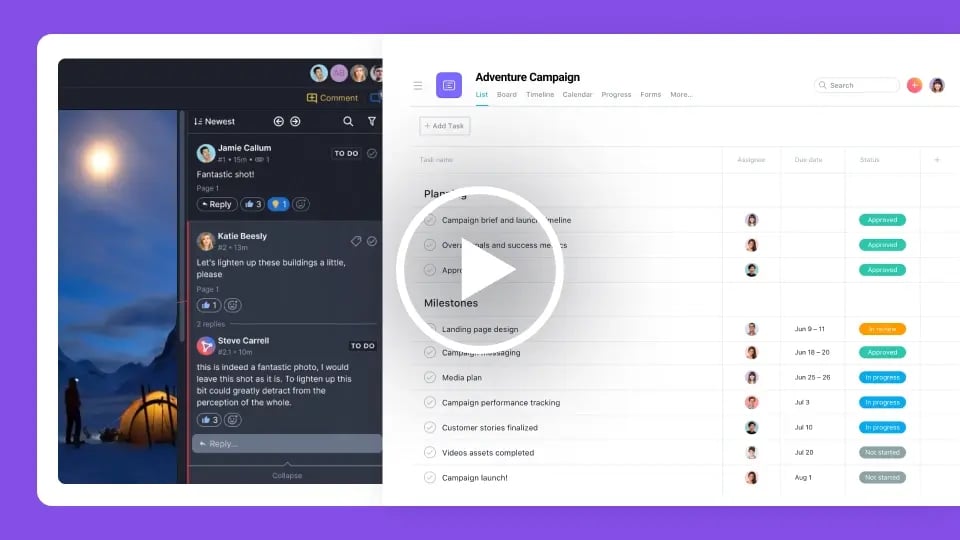
Watch how clicking a link in an Asana task opens Ziflow’s intuitive proof viewer, where reviewers can leave feedback on any asset.
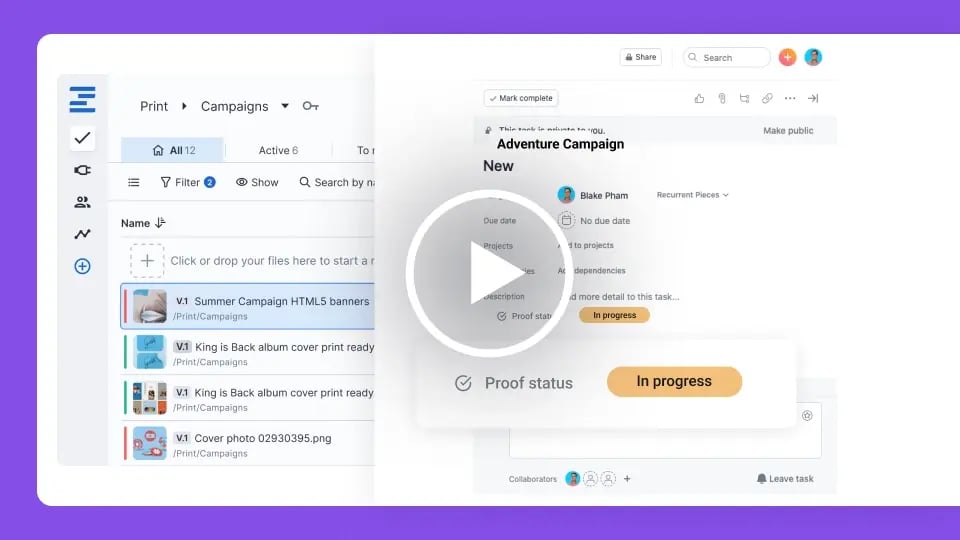
See the integration in action: comments and decisions in Ziflow automatically update statuses and fields in Asana, saving your team time and effort.
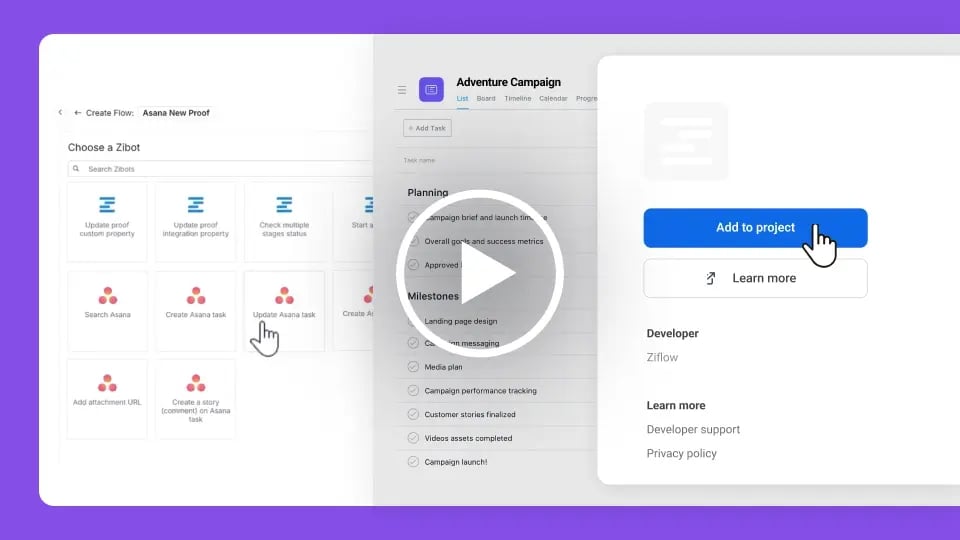
Admins can follow this step-by-step walkthrough to configure Ziflow’s integration with Asana.
INTEGRATIONS
Ziflow integrates with your favorite apps to streamline collaboration, automate tasks, and keep your creative process connected from start to finish.
Put an end to the review cycle frustrations. Start a free trial of Ziflow without a credit card, and experience creativity without compromise.
GET STARTED
TEAMS
INTEGRATIONS
INDUSTRIES